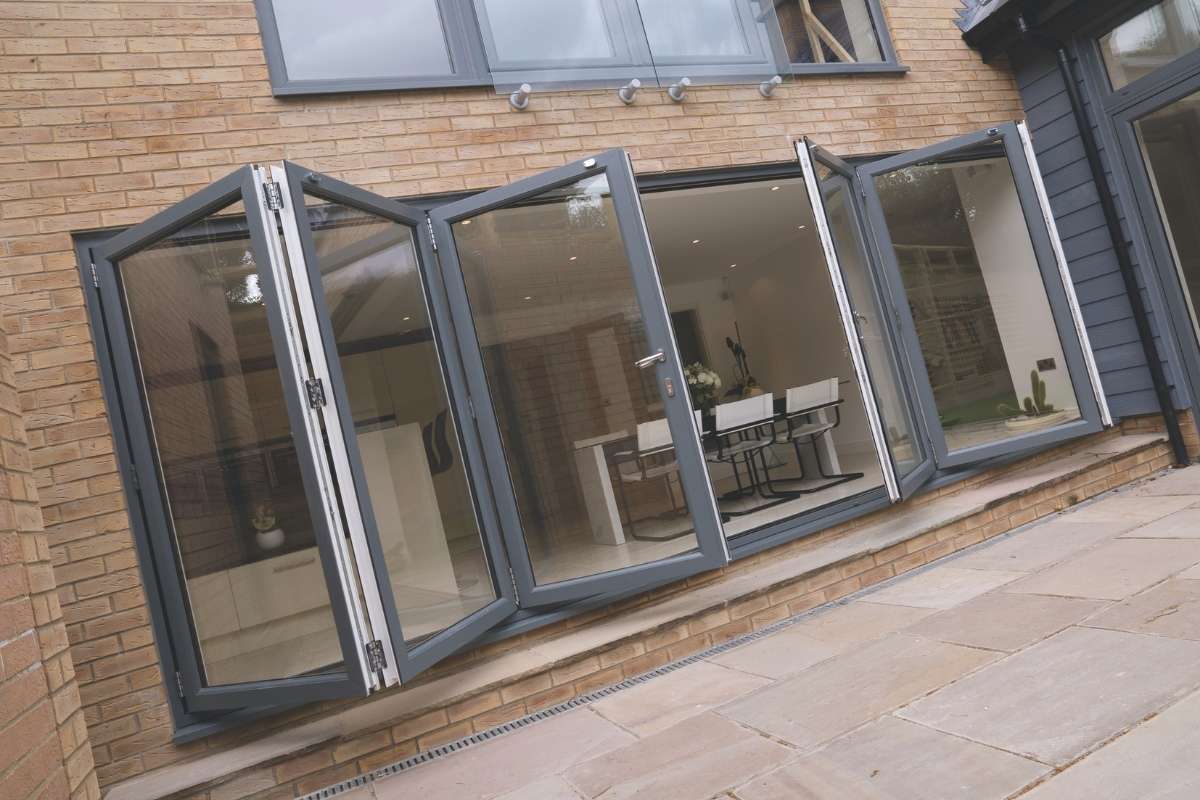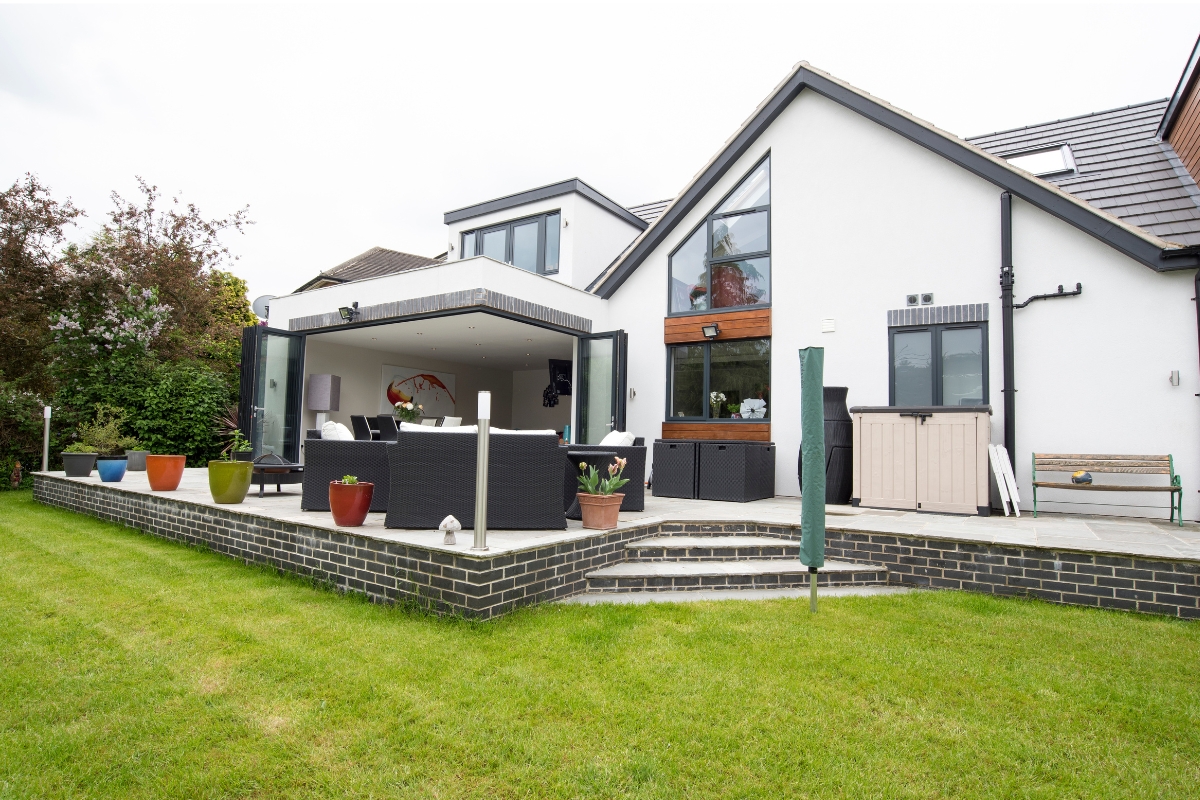The Ultimate Guide to Bifold Doors
The Ultimate Guide to Bifold Doors
With their sleek design and seamless integration of indoor and outdoor areas, bifold doors have become popular among homeowners and architects. Offered with a wide range of materials, glass and design options, homeowners can transform their surroundings, create an expansive view, maximise natural light and improve energy efficiency.
This guide to bifold doors explores their features, benefits and maintenance requirements.
What are Bifold Doors?
Bifold doors are designed with multiple panels joined by hinges. These versatile doors allow the panels to slide and fold to one or both sides, creating a broad, unhindered passageway. Primarily recognised for their space efficiency, bifold doors are popular in areas such as closets or laundry rooms. They are commonly used as a connection between the indoors and outdoors, including patios, gardens and balconies to enhance natural light and airflow while providing a wide, scenic view of the exterior.
Types of Materials
Aluminium Bifold Doors
Aluminium bifold doors have gained popularity due to their sleek and modern appearance.
Their durability makes them sturdy and resistant to warping or twisting. As a result, they are relatively low maintenance and require minimal upkeep. They can also withstand harsh weather conditions and are resistant to rust, corrosion and fading, making them a suitable choice for indoor and outdoor use.
uPVC Bifold Doors
Without compromising functionality and durability, uPVC Bifold Doors are a more budget-friendly option. Like aluminium, they are resistant to rotting, fading and weathering. Due to this, they do not require painting or staining and are easy to clean and maintain over time.
In addition, uPVC frames provide excellent thermal insulation, helping to keep the interior spaces comfortable and energy-efficient all year round.

Timber Bifold Doors
Timber bifold doors are made from natural wood, such as oak, mahogany or pine and are known for their timeless elegance and warm aesthetics. Though they can last many years, they are more prone to scratching and dents than aluminium.
As wood is a natural insulator, timber bifold doors can help regulate indoor temperature and minimise heat loss or gain. This quality can contribute to improved energy efficiency and reduced energy bills.
Glazing Options to Consider
Double Glazed Clear Glass
Clear glass is the most basic and commonly used option for bifold doors, for it offers a high level of transparency, allowing maximum natural light to enter the living space. It is ideal for homeowners who want an unobstructed view of their outdoor space and want to enhance natural light in the interior.
It’s worth considering clear glass that’s double glazing as it can act as a heat and noise insulator. Not only does it create a peaceful and warmer indoor environment, but double glazing also helps to reduce condensation on the interior surface of the clear glass as the inner pane remains warmer due to the insulating layer. This can help maintain clear visibility of the garden and prevent moisture-related issues.
Frosted or Obscured Glass
When privacy is a concern, frosted or obscured glass is a popular choice for bifold doors. This type of glass is translucent, allowing light to pass through but preventing a clear view.
Frosted glass is often used for areas where you want to maintain privacy while still allowing some natural light to filter through. It is commonly used in bathrooms or spaces that require separation without completely blocking off the view, such as the hallway through to the living room.
Tinted or Reflective Glass
Tinted or reflective glass is a great option for bifold doors to control heat and glare from the sun.
Tinted glass comes in various shades, such as grey, bronze, or blue, which can add a touch of colour and style to your bifold doors, while reflective glass provides a reflective surface on one side. This one-way mirror glass design can offer additional privacy throughout the day.
Both tinted and reflective glasses provide solar control benefits, making them suitable for reducing heat from entering the room and minimising glare on screens and displays.
Colour Options to Consider
Bifold doors come in various colours, catering to different design preferences and architectural styles.
While white provides a timeless and versatile aesthetic that suits contemporary and minimalistic settings, wood tones enhance the bifold doors with warmth and elegance. For those seeking a sleek and modern look, black or dark grey is a favoured option.
Why You Should Choose a Bifold Door
Bifold doors are excellent space savers as they fold in on themselves, making them ideal for smaller spaces or areas where a traditional swinging door might be impractical. What’s more, their versatility, aesthetic appeal and energy efficiency are great for enhancing space, style and comfort.
If you’re into DIY, bifold doors are also a user-friendly design that can be installed by yourself.

